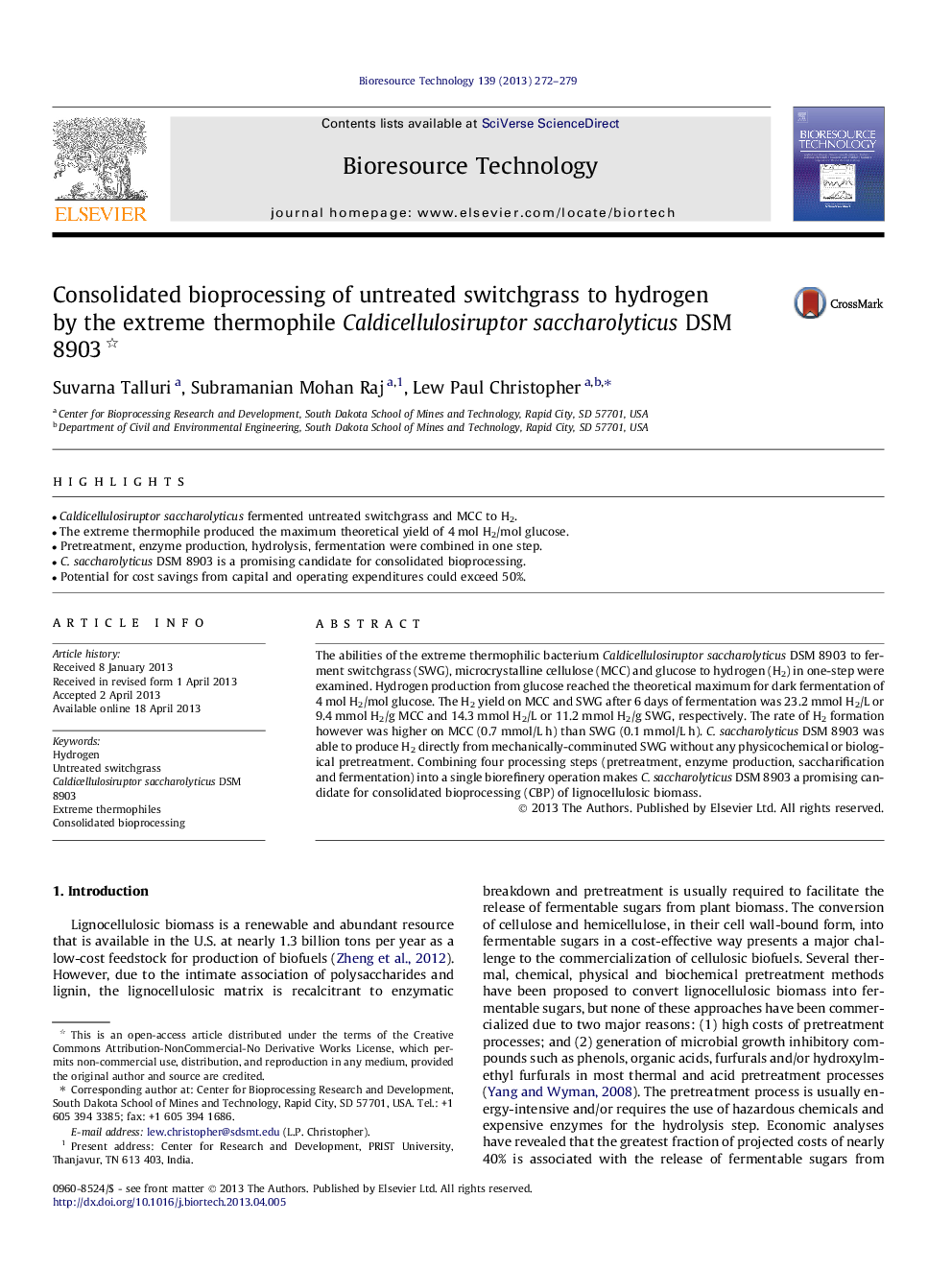| Article ID | Journal | Published Year | Pages | File Type |
|---|---|---|---|---|
| 7082399 | Bioresource Technology | 2013 | 8 Pages |
Abstract
The abilities of the extreme thermophilic bacterium Caldicellulosiruptor saccharolyticus DSM 8903 to ferment switchgrass (SWG), microcrystalline cellulose (MCC) and glucose to hydrogen (H2) in one-step were examined. Hydrogen production from glucose reached the theoretical maximum for dark fermentation of 4Â mol H2/mol glucose. The H2 yield on MCC and SWG after 6Â days of fermentation was 23.2Â mmol H2/L or 9.4Â mmol H2/g MCC and 14.3Â mmol H2/L or 11.2Â mmol H2/g SWG, respectively. The rate of H2 formation however was higher on MCC (0.7Â mmol/LÂ h) than SWG (0.1Â mmol/LÂ h). C. saccharolyticus DSM 8903 was able to produce H2 directly from mechanically-comminuted SWG without any physicochemical or biological pretreatment. Combining four processing steps (pretreatment, enzyme production, saccharification and fermentation) into a single biorefinery operation makes C. saccharolyticus DSM 8903 a promising candidate for consolidated bioprocessing (CBP) of lignocellulosic biomass.
Related Topics
Physical Sciences and Engineering
Chemical Engineering
Process Chemistry and Technology
Authors
Suvarna Talluri, Subramanian Mohan Raj, Lew Paul Christopher,
